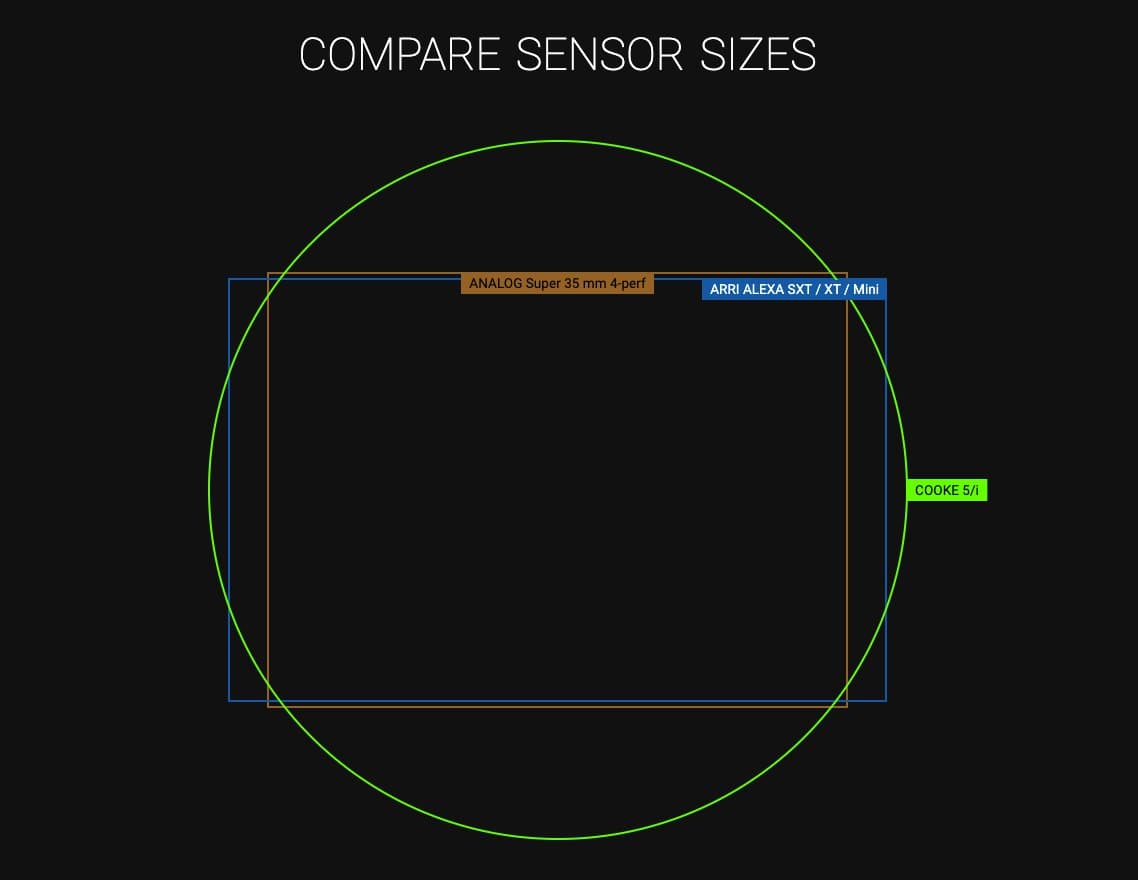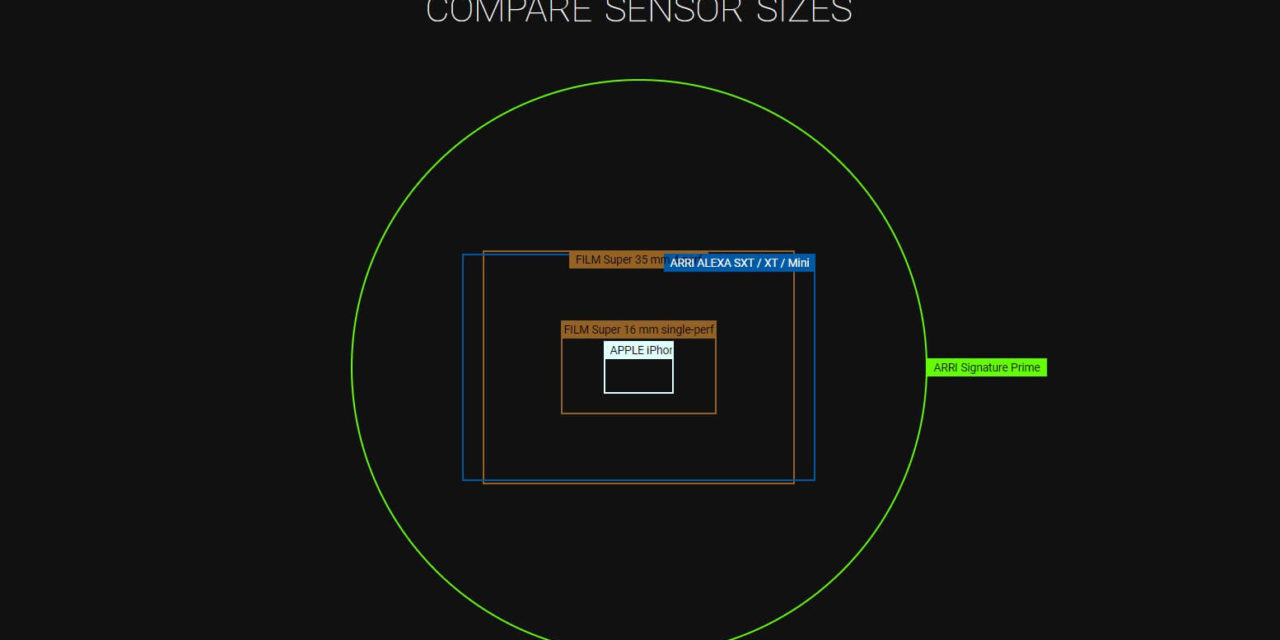Easily compare digital cinema camera sensor sizes as well as analog formats and verify lens coverage.
“Compare Sensor Sizes” is a free, open source tool to compare multiple digital camera sensor sizes, celluloid film formats and lens image circles – graphically as well as in tabular form.

In addition to the comparison function and the usability as a trustworthy, sortable database, one of the most useful features is the possibility to check which lenses cover which sensors and to what extent. If a lens does not yet appear in the list, you have the option of specifying an individual image circle in millimeters, which is then displayed.
You can also switch to the real physical sensor sizes in the graphical view, if you specify the size of your screen in inches.
The tool should also bring clarity to diffuse terms like Large Format, Full Format and Full Frame, which do not denote standardized sizes and are used differently depending on the manufacturer.
The value of pixel density – that is the number of photosites per given sensor area – helps to quickly determine which camera will have highest resolutions with a small lens image circle. For example you want to shoot on old 16mm lenses and still expose a 4K sensor area? Then just sort the camera models by “Density” and immediately you will see the most suitable cameras first.
Why does sensor size matter?
Imagine the sensor as a canvas in front of you. The larger the sensor, the larger the angle of view (field of view) for a given focal length and distance to the subject. Therefore to get a desired angle of view, you can move closer to the subject or use a longer focal length compared to a smaller sensor size. Either way this means the depth of field becomes shallower as a result. So with the same angle of view, distance to subject and aperture, you’ll always get shallower depth of field the larger the sensor size.
In addition to that a larger sensor means additional area for more photosites (more pixels) or bigger photosites (brighter pixels) or a bit of both.
Lastly the sensor size determines the set of lenses one can use, if full sensor coverage is desired.
Source: sensorsizes.com





